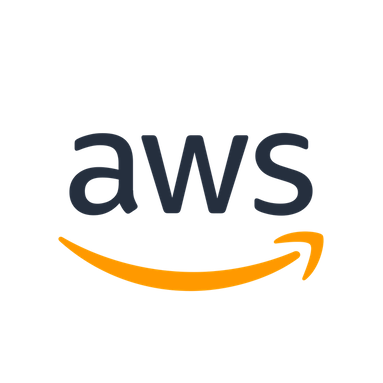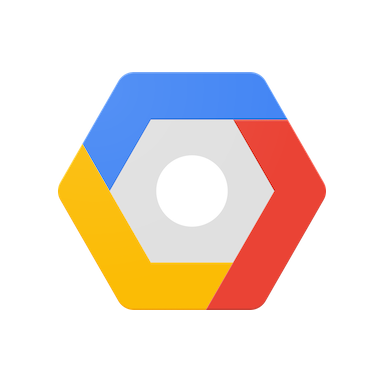In an era where DevOps practices are becoming integral to organizational success, the adoption of CI/CD processes is rising. According to a Puppet report , almost 8 out of 10 organizations are in the middle of DevOps implementation.
The smooth and efficient execution of these processes hinges on the right tools. Drawing from our expertise, we've curated a selection of top-tier CI/CD tools to empower you in constructing a high-impact CI/CD pipeline.
What is CI/CD?
Before we delve into more details, let’s look at what the acronym CI/CD stands for.
Continuous integration (CI) automates code building, testing, and merging, ensuring error-free collaboration between programmers across components. Early automated bug detection prevents quality issues post-release.
Continuous delivery (CD) swiftly releases software in short cycles, enhancing speed and frequency. Smaller code batches enable rapid bug fixes and feature additions, simplifying management and bolstering code resilience.
CD also encompasses continuous deployment, which takes automation further by seamlessly deploying every code change directly into the production environment, ideally without requiring manual human intervention. Although an environment is automatically built in traditional continuous delivery, the final step of transferring to the production environment typically involves manual oversight.
With continuous deployment, this crucial step of transitioning to the live production environment is also handled automatically, ensuring a streamlined and efficient release process.
Business benefits of CI/CD
CI/CD offers major business benefits:
- Code quality is improved
- Time-to-market of new features is shortened
- Automation reduces overall costs and labor
- You get instant feedback about your code
- Communication is streamlined
- You gather detailed metrics about your application’s performance
- Customer satisfaction improves
The next section walks you through the tools you’ll need to build your own CI/CD pipeline.
CI/CD pipeline tools
CI/CD pipeline tools are software solutions that automate and orchestrate the end-to-end processes of continuous integration and continuous delivery or deployment. These tools streamline the integration, testing, and deployment of code changes, enabling software teams to build, test, and release applications efficiently. CI/CD pipeline tools ensure consistency, reliability, and speed in the software development life cycle, enhancing collaboration and delivering higher-quality software to users.
Cloud-based CI/CD pipeline tools, that are meant for applications deployed in a cloud infrastructure rather than being hosted on local servers or machines are offered by three major public cloud providers:
- AWS CodePipeline
- Cloud Build from Google Cloud Platform (GCP)
- Azure DevOps
CircleCI

CircleCI’s main features:
- Docker support for consistent environments.
- Parallelism and distributed testing for faster builds.
- Extensive integrations with version control systems (GitHub, Bitbucket, etc.).
- Customizable workflows using YAML configuration files.
- Caching to speed up build times.
- Orbs: reusable configurations for everyday tasks.
Benefits:
- Rapid feedback through automated testing.
- Enhanced collaboration among development teams.
- Seamless integration with leading cloud providers.
- Scalability for projects of all sizes.
- Reduced manual intervention and increased productivity.
- Continuous deployment to various environments.
When to choose this tool:
- For teams seeking fast and reliable builds.
- Suitable for both small startups and large enterprises.
- For projects with diverse deployment targets and cloud environments.
Tekton

Originally developed by Google, Tekton is a Kubernetes-native open source framework for creating continuous integration and delivery (CI/CD) systems.
Thanks to using Kubernetes, Tekton allows you to build, test and deploy your software across multiple cloud providers or on-premises systems by creating an abstraction layer with all underlying implementation details.
Tekton has been gaining in popularity and is used on such platforms as IBM Cloud, OpenShift and VMware Tanzu.
Tekton’s main features include:
- A set of custom resource
extensions to Kubernetes that define CI/CD-style pipelines and related concepts.
- These custom resources are described in YAML
source files and stored in a code repository where they can be versioned.
- You can create and deploy immutable images, manage version control of infrastructure, and perform easier rollbacks.
- You can leverage advanced deployment patterns like rolling, blue/green, canary deployment, or GitOps workflow.
The main benefits of using Tekton:
- Since it is Kubernetes-native, you can create cloud-native CI/CD pipelines quickly.
- It may be Kubernetes-native, but Tekton can be used to deploy to any type of environment (Kubernetes cluster, virtual machines, etc.).
- It offers all the benefits of a cloud-native CI/CD pipeline tool: high availability, centralized logging and monitoring, default self-healing.
- The pipeline-as-code approach provides the benefits of versioning and source control.
Recommended for:
- Organizations and projects focused on Kubernetes-native CI/CD workflows.
- Teams that value building cloud-native, containerized applications.
- Projects that require fine-grained control over their CI/CD pipelines.
- Teams looking to leverage Kubernetes custom resources for defining pipelines.
- Organizations seeking a flexible and extensible CI/CD solution for their Kubernetes-based applications.
- Best suited for projects that require a high level of automation and scalability.
Jenkins X

Jenkins and Jenkins X have a lot in common: everything you can do with Jenkins X you can do with Jenkins, if you use several plugins and integrations. Jenkins X also uses Tekton as a pipeline engine. The main difference is that Jenkins X was built with a cloud-native approach in mind, so it works better with container orchestration platforms like Kubernetes or Docker Swarm. Additionally, Jenkins X allows you to harness open source tools like Helm, Draft, Monocular, ChartMuseum, Nexus and Docker Registry. As a result, you can build cloud-native applications faster and easier.
Jenkins X main features include:
-
A handy jx command line that allows you to:
- install Jenkins X inside an existing Kubernetes cluster,
- create a new Kubernetes cluster and install Jenkins X into it,
- import projects,
- bootstrap new applications.
-
Automatic setup of a CI/CD pipeline.
-
The ability to create different virtual environments for development, staging, and production, etc. using the Kubernetes namespace.
-
The automatic promotion of new versions of applications between these environments following GitOps practices.
-
The ability to create preview environments for each pull request automatically.
The main benefits of using Jenkins X are:
- Easy to set up thanks to a single line jx command.
- Provides isolation: every team runs its own instance of Jenkins X either in a shared cluster or in their own separate clusters.
- Fast to run thanks to powerful commands that expedite most tasks and provide seamless integration with cloud or SCM.
- Easy and fast to install; the application code along with all necessary files for containers, packaging, and pipelines are stored in a common repository and are available out of the box.
- Allows for faster recovery: the configuration as code, for both Jenkins X and your environments, allows developers to get the right context and traceable information to resolve outages faster.
Choose Jenkins X for:
- Kubernetes-native projects.
- Teams that value automated provisioning and scaling of build environments.
- Projects with a focus on cloud-native development and containerization.
- Organizations seeking an integrated solution for CI/CD and Kubernetes deployment.
- Suitable for both small teams and large enterprises looking for a comprehensive DevOps platform.
GitLab CI/CD

GitLab’s CI (continuous integration) service builds and tests the software whenever the developer pushes code to the application. On the other hand, thanks to continuous delivery capabilities, GitLab ensures your code can be reliably released at any time. If you want to automate the process and ditch the manual deployment approach, you should aim for continuous deployment.
GitLab CI/CD’s main features include:
- View, create and manage code and project data through branching tools.
- Design, develop, and manage code and project data from a single distributed version control system, which enables rapid iteration and delivery.
- Create a single source of truth for the teams collaborating on software development projects.
- Perform container scanning, static application security testing (SAST), dynamic application security testing (DAST), and dependency scanning to deliver secure applications whilst ensuring license compliance.
The main benefits of GitLab’s CI/CD are:
- Easy to learn, use and scale.
- Automates build, integration, and verification of source code to detect bugs before your software goes into production.
- Helps automate and accelerate releases and the delivery of applications.
- Provides the artifact repositories as packages of different types.
- Provides container repository.
- Supports integration with Kubernetes and serverless platforms.
- Has a built-in issue tracker and wiki.
When to choose:
- Projects that require an end-to-end DevOps platform.
- Organizations that value an all-in-one solution for version control, CI/CD, and more.
- Teams that want seamless integration with GitLab's repository management.
- Projects that need an integrated container registry and Kubernetes integration.
- Suitable for organizations seeking a platform that covers the entire development life cycle.
- On-prem solution instead of using cloud versions of tools.
- Different code repository than GitHub (pricing and features).
GitHub Actions

GitHub Actions is an open source tool you can use to automate a CI/CD pipeline. It allows you to build, test and deploy code directly from GitHub. You can base your automation on any GitHub events, including code push or issue creation (or other Git commands with examples we've already mentioned in other articles).
GitHub Actions features include:
- Matrix workflows that simultaneously test across multiple operating systems and versions of your runtime.
- Hosted runners for all major operating systems.
- Built-in secrets storage and live log reviews. This allows you to store your infrastructure as code without exposing sensitive data, like database usernames and passwords.
- Hosted runtime environments that are free to use for the first 2000 minutes per month; additional time can be purchased by the minute or in bulk.
- Access to community-based marketplace with custom actions supporting of all common languages (e.g. Node.js, Python, Java, Ruby, PHP, Go, Rust, .NET, and more).
The main benefits of GitHub Actions include:
- Integrated as a part of GithHub’s code repository.
- Starting to work with GitHub Actions is easy, as it provides many templates for all types of CI configurations.
- You can create your own CI templates and publish them on GitHub Marketplace.
- You can also test multi-container configurations once you add Docker and composition file support to your workflow.
- It is free to use with open source repositories; with private ones, you have 2000 minutes free each month.
When to choose Github Actions:
- Projects hosted on GitHub.
- Open source projects due to its tight integration with GitHub.
- Teams looking for a seamless and easy-to-set-up CI/CD solution.
- Projects that require flexible workflow automation and extensibility.
- Suitable for both small and large projects, including enterprise-level applications.
ArgoCD

Main features of ArgoCD:
- GitOps methodology for managing infrastructure as code.
- Automated synchronization of application state with Git.
- Rollback and version control for configuration changes.
- Integration with Kubernetes native resources.
- Web-based UI for managing deployments.
- CLI for automation and scripting.
Benefits:
- Consistency and traceability of application deployments.
- Simplified management of Kubernetes resources.
- Promotion of best practices through Git-based workflows.
- Efficient rollbacks in case of errors.
- Collaborative and auditable deployment process.
Choose for cases such as:
- The team is using Kubernetes for application orchestration.
- Projects with a need for declarative and version-controlled deployments.
- Organizations focused on efficient and automated Kubernetes management.
Keptn

Main features:
- Event-driven automation for deployment, testing, and remediation.
- Multi-stage pipelines for gradual deployments.
- Built-in quality gates for automated testing.
- Integrations with various monitoring and observability tools.
- Self-healing and auto-remediation of incidents.
- Support for cloud-native technologies.
Benefits:
- Streamlined end-to-end automation of delivery and operations.
- Reduced downtime through automated incident response.
- Consistent application performance through quality gates.
- Flexibility to incorporate existing monitoring tools.
- Accelerated development-to-production cycles.
Keptn is good for:
- Organizations adopting event-driven automation.
- Projects requiring continuous monitoring and auto-remediation.
- Teams focused on improving reliability and efficiency in operations.
Now we’ll have a look at the cloud-based CI/CD pipeline tools.
Amazon Web Services (AWS)

As one of the main public cloud providers, AWS offers an entire set of services for configuring your CI/CD process:
- AWS CodeCommit
— a source control service that hosts secure Git-based repositories that allows teams to collaborate on code in a secure and highly scalable environment.
- AWS CodeBuild
— a continuous integration service that compiles source code, runs tests, and produces software packages that are ready to deploy on a dynamically created build server.
- AWS CodeDeploy
— allows you to automate your software deployments to a variety of computing services including Amazon EC2, AWS Fargate, AWS Lambda, or your on-premises servers.
- AWS CodePipeline
— a continuous delivery service that helps you automate your release pipelines for fast and reliable application and infrastructure updates.
Additionally, you can use other Amazon services like AWS CloudWatch Events , Amazon Simple Storage Service
, AWS Key Management Service
or third-party tools like Jenkins.
Benefits of AWS:
- Customize all steps according to your needs using Amazon GUI, console, APIs, AWS SDKs, AWS CloudFormation, AWS CLI.
- Integrate AWS with other services: AWS CloudWatch Events
, Amazon Simple Storage Service
, AWS Key Management Service
or third-party tools like GitHub, Jenkins, TeamCity, Ghost Inspector, Runscope, BlazeMeter, and XebiaLabs.
- Set granular user permissions to access and modify your resources with AWS Identity and Access Management (IAM).
Choose for:
- Organizations heavily invested in AWS cloud infrastructure.
- Projects that require seamless integration with AWS services.
- Teams that seek an extensive range of tools and services for building, deploying, and managing applications.
- Projects that prioritize a cloud-native approach to development and deployment.
- Suitable for both startups and enterprises leveraging AWS services.
Google Cloud Platform (GCP)

Its main features include:
- Support for the vast majority of the most popular programming languages, including Java, Go, and Node.js.
- 15 machine types to choose from and the ability to run hundreds of concurrent builds per pool.
- Access to cloud-hosted and fully managed CI/CD workflows from private networks.
- Data stored within a geographical region or specific location to ensure compliance with legal regulations.
Cloud Build benefits include:
- Scalability: the platform is fully serverless and can be scaled up and down with no need to pre-provision servers.
- Flexibility: integrate legacy tools with the build process.
- Security: scan vulnerabilities as part of your CI/CD and automatically block the deployment of vulnerable images.
Good choice for:
- Projects deeply integrated with Google cloud services.
- Organizations that use GCP for their cloud infrastructure.
- Teams that value a comprehensive set of tools for CI/CD, containerization, and deployment.
- Projects that prioritize leveraging Google Kubernetes Engine (GKE) for container orchestration.
- Organizations looking for a fully managed cloud platform for their development needs.
Azure DevOps

Azure DevOps features:
- Support for any language including Go, Node.js, Python, Java, PHP, Ruby, C/C++, .NET, Android, and iOS apps.
- Support for hosted agents for Windows, Mac, and Linux apps.
- Support for any platform including Linux/Windows VMs, Kubernetes, Azure PaaS Services and any cloud, such as AWS or GCP.
- Configuration of a CI/CD pipeline as code using YAML files.
- Support for deployment strategies like rolling updates.
- Access to both traditional virtual machine (VM) managers and more advanced deployment groups.
Benefits of Azure DevOps:
- Build, test and deploy on-premise or in any cloud environment.
- Set any number of stages during the development and testing phases to better detect bugs and understand the root cause of detected issues.
- For all open source projects, you have access to unlimited build minutes and up to 10 parallel jobs at no cost.
- If you are using GitHub repos, you can use the Azure DevOps app to easily set up a CI/CD pipeline.
Good choice for:
- Organizations using Microsoft Azure cloud services.
- Projects requiring tight integration with Azure services and resources.
- Teams seeking a unified solution for building, testing, and deploying applications.
- Projects that require support for multi-platform and multi-language environments.
- Enterprises and businesses that prioritize Microsoft's cloud ecosystem.
Spinnaker

Spinnaker features:
- Multi-cloud support for deploying applications to various cloud providers.
- Automated canary analysis for controlled rollouts.
- Pipelines as code for defining delivery processes.
- Integration with Kubernetes, Terraform, and other tools.
- Rollbacks and manual interventions for safety.
- Configurable deployment strategies.
Benefits:
- Consistent application deployment across diverse cloud environments.
- Reduced risk in deploying new versions through canary analysis.
- Flexibility to define complex delivery pipelines.
- Scalable and customizable to fit different deployment needs.
- Enhanced collaboration between development and operations teams.
Choose for:
- Organizations using multiple cloud providers.
- Projects requiring advanced deployment strategies.
- Teams focused on achieving zero-downtime deployments.
Drone CI

Main features:
- Docker-based builds for reproducible environments.
- Configuration as code using a simple YAML syntax.
- Integrations with popular version control systems.
- Scalability through distributed agents.
- Webhooks and triggers for automation.
- Extensible plugin system.
Benefits of Drone CI:
- Quick setup and configuration.
- Low resource overhead due to container-based architecture.
- Customizable through plugins and extensions.
- Efficient use of distributed build agents.
- Ideal for small to medium-sized projects.
When to choose:
- For projects with straightforward deployment needs.
- Teams seeking a lightweight and self-hosted CI/CD solution.
- Organizations with resource limitations or cost considerations.
Gitea Actions

Gitea Actions main features:
- Tight integration with Gitea repositories.
- YAML-based workflows for defining CI/CD processes.
- Automated testing, building, and deployment stages.
- Support for various triggers and events.
- Customizable environment variables.
- Seamless collaboration with Gitea's code hosting features.
Benefits:
- Streamlined CI/CD within the Gitea ecosystem.
- No need for external CI/CD tool integration.
- Simplified setup and configuration.
- Direct access to code repositories and pull requests.
- Enhanced traceability of changes and deployments.
Good for:
- Teams that use Gitea as their primary version control system.
- Projects that require a tightly integrated CI/CD solution.
- Small to medium-sized projects with straightforward deployment needs.
| Open source | Complexity | Hosting | Free version | Free features | Native integration with k8s | CI | CD | |
|---|---|---|---|---|---|---|---|---|
| Circle CI | No | Low | Cloud | Yes | Limited | Yes | Yes | Yes |
| Tekton | Yes | Medium | Self-hosted | Yes | Extensive | Yes | Yes | Yes |
| Jenkins X | Yes | High | Self-hosted | Yes | Limited | Yes | No | No |
| GitLab CI | Yes (only community version) | Medium | Cloud / Self-hosted | Yes (some features) | Limited | Yes | Yes | Yes |
| GitHub Actions | No | Low | Cloud | Yes (some features) | Limited | No | No | Yes |
| ArgoCD | Yes | Medium | Self-hosted | Yes | Extensive | Yes | Yes | No |
| Keptn | Yes | High | Self-hosted | Yes | Limited | No | No | No |
| AWS CI/CD Tools | No | Low | Cloud | Yes (some features) | Limited | No | No | Yes |
| GCP CI/CD Tools | No | Low | Cloud | Yes (some features) | Limited | No | No | Yes |
| Azure DevOps | No | Low | Cloud | Yes | Extensive | No | No | Yes |
| Spinnaker | No | Low | Self-hosted | Yes | Extensive | No | Yes | Yes |
| Drone CI | Yes | Medium | Self-hosted | Yes | Limited | Yes | No | No |
| Gitea Actions | Yes | Medium | Self-hosted | Yes | Limited | No | No | No |
Final thoughts
As you can see, there are plenty of options to choose from, both open source and paid, when building your own CI/CD pipeline. The right tool will allow you to enjoy all the benefits of building, testing and deploying your software automatically.
If you want to read more about CI/CD - check out our other articles:
- CI/CD tools in DevOps – which should you choose?
- Continuous monitoring and observability in CI/CD
- CI/CD process—how to handle it
- Business benefits of CI/CD
- How to set up and optimize a CI/CD pipeline
Original post date 08/24/2021, update date 09/20/2023.
If you'd like to learn more about our environment-related services, explore our offerings.









